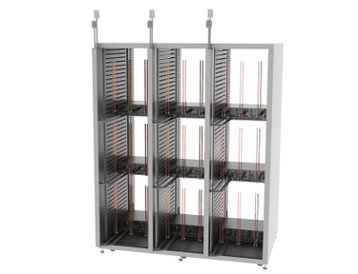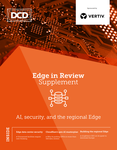Introduced by the Open Compute Project Foundation (OCP) five years ago, the OCP Ready certification program for colocation data centers has only recently begun gaining traction in the market.
This is likely to gather momentum as the demand for AI-enabled applications, and therefore HPC, continues to grow at scale.
Its goal is to help end users such as solutions architects to identify colocation data center providers and facilities where OCP IT equipment can be deployed without complications.
Because the program’s standards are open-source (like some software), operators will know what a given rack needs to do in terms of size, capability, and power before it arrives onsite, and ensure the design and layout is ready to support this class of equipment. The net result: faster speed to market and reduced costs.
The majority of Open Compute hardware is deployed as a fully populated rack. OCP-Ready data center facilities must be able to easily accommodate racks of these weights and dimensions and be able to deploy multiple racks of such equipment at scale. As a minimum, the rack sizes can weigh 500kgs to 1,500kgs, and reach 47U in height. The workloads can be anything from 6.6KW to 36kW and beyond.
In addition, the density of compute to meet scale demands and efficiency goals raises the bar for power and cooling specifications for racks. Cooling of the racks will require potentially a range of solutions – immersive, chilled water/air, and chip cooling. For the higher densities, the expectation is for PUE to be sub 1.1.
The real value here of OCP is that these elements are researched at such scale as to short-circuit the development and standardization process from decades to years and sometimes months.
What was the preserve of a small number of mainframe computers, high power density, and cooling is now readily available at all levels in the data center community. Not too long ago a small data center might have been considered to be a cluster of 50 to 100 racks with a combined IT load of 100kW.
A single rack can now accommodate 100kW in normal chilled water cooling and this scales to 250kW with immersive cooling. These developments represent giant steps forward in terms of efficiency.
Such efficiency was and is impossible to replicate in a normal business environment. Hence the migration of millions of IT business environments to the Cloud (data centers).
What comes with these migrations is not just raw efficiency in terms of lower power usage. There are substantial benefits in terms of flexibility in how organizations choose to manage their services and growth as well as fundamentally robust SLAs guaranteeing 99.98 percent service availability.
Getting OCP-Ready
OCP has a set of core tenets – efficiency, impact, openness, scale, and sustainability. These represent the core principles of living in the OCP community.
It’s quite a hurdle to join the OCP and therefore be eligible to undergo the detailed OCP-Ready self-certification process. It entails working with the OCP to achieve compliance against its rigorous criteria for power, cooling, IT technical space layout and design, facility management and control, and facility operations.
Thereafter, demonstrating an ongoing commitment to continuous improvement and of course sharing. The certification is reviewed every two years to track development against the core principles and PUE.
At the outset, it involves presenting your data center technically and environmentally to your technical peers including a Q&A session - we had to demonstrate that we lived their principles in our daily operations. This is key as it just wouldn’t work if these remained on the wall as a set of rules.
We also had to demonstrate our commitment to continuous development in terms of ISO14001 – Environmental Management, our CCA tariff relief program, and to lowering our PUE from its current level of 1.24.
No tick box exercise
Of course, some may take the view OCP-Ready is a one-size-fits-all and it has a very narrow mission in terms of creating more efficiency for more data centers.
My opinion is that, like all such enterprise missions, they evolve. When OCP was started 13 years ago by a very small number of very influential industry leaders, its core mission was to optimize computing, storage, and network devices.
Since then it has evolved into the global organization it is today with over 8,000 engineers and members such as Arm, Meta, Google, HPE, Inspur Systems, Intel, Microsoft, Nvidia, and others, all of which are industry titans.
The mission has evolved into supporting the core tenets of efficiency, impact, openness, scale, and sustainability. These tenets embrace a much wider vision and go well beyond optimizing computing, storage, and network efficiency.
OCP-Ready is therefore no tick box exercise to facilitate easy accommodation of HPC and AI infrastructure. If you believe this, you will have become part of the audience and not one of those 8,000 engineers engaged in the never-ending revolution/evolution within our industry and the OCP community.
OCP-Ready also fits neatly alongside other global standards within the industry such as BREAM, LEED, ISO, and Uptime.
It just makes sense at some point that all these design and operational standards converge to rationalize the processes. All like-minded organizations within OCP will find they have a significant commitment to BREAM, LEED, ISO, and Uptime.
It remains for our members to lobby these other organizations to inspire cooperation and sharing of our common values and mission.
In summary, there are still hundreds of millions of highly inefficient IT environments throughout the world with PUE levels in excess of 2.0 in the public sector, the commercial sector, and industrial environments, all awaiting migration to the Cloud. OCP and OCP-Ready make this transition possibility faster, more efficient, and more robust.





